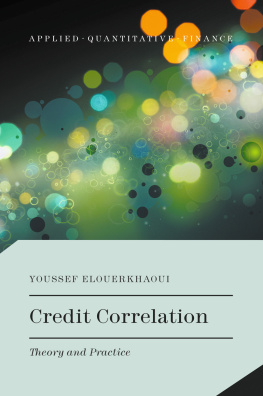In this section, we give a brief description of the key credit derivative products traded in the market, namely: Credit Default Swaps, First-to-Default Swaps and Collateralized Debt Obligations.
1.1.1 Credit Default Swaps
A Credit Default Swap (CDS) is a derivative contract, similar to an insurance, which offers protection against the default of a given reference entity or a specific reference bond. The protection buyer pays a premium (or a fee) either upfront, at contract inception, or on a regular fixed schedule, to the protection seller until maturity of the contract or default of the reference entity, whichever happens first. In return, in the event of default, the protection seller pays the protection buyer a fixed amount equal to the notional of the swap minus the recovery value of the reference bond, thereby making the protection buyer whole.
Mathematically, the PV of a swap is given by the difference between the PV of the protection leg

, and the PV of the premium leg

.
Let us consider a credit default swap, maturing at time T , with payment schedule

, daycount fractions

, and premium S . We denote by

the default time of the reference entity;

is the default indicator; R is the recovery rate; and N is the trade notional. Then, we can write the PV of the CDS as the expectation of the trade discounted cash-flows:
where

is the risk-free discount factor maturing at time T .
Accrued in default . In practice, most credit default swaps trade with an accrued-in-default payment feature: if the default occurs during a coupon period, then the cash-flow payment that has been accrued up until the time of default time is included in the default payment. This gives the clean PV of the CDS contract.
Digital CDS . There are also Digital or Fixed Recovery CDS contracts where the payment at default is agreed beforehand as a fixed (digital) amount, which does not depend on the actual recovery value of the underlying reference entity. The combination of regular CDSs and fixed recovery CDSs can be used to bootstrap both the default probabilities and the recovery rates for a given reference entity.
Credit Linked Notes . Credit Default Swaps can be traded in a funded format as Credit Linked Notes, where the investor buys a defaultable Floating Rate Note (FRN), which pays a set of regular floating cash-flows, on the payment schedule dateswhich are equal to a floating Libor rate plus a fixed spread-, and pays back the notional of the note at maturity conditional on survival of the reference entity. If a default event occurs, then all coupon payments stop, and a fraction of the notional payment, defined by the recovery rate of the defaulted entity, is paid back at the default termination date.
SNAC Convention . It is worth noting that after the CDS big-bang convention changes in 2010, most CDS do not trade at par anymore. Instead, a set of pre-defined regular coupons (100 bps for regular investment grade credit, and 500 bps for wider high yield credits) is applied to all CDS contract, and an upfront payment (to be exchanged between the two counterparties) is computed. This is referred to as the Standard North American Contract (SNAC) convention. CDS contracts are marked on an upfront basis, and a standard (ISDA) calculator is used to convert the upfronts to spreads and vice-versa (see, for example, Beumee et al. () for more details).
1.1.2 First to Default Swaps
A First-to-Default Swap (FTD) or more generally an n th-to-Default Swap (NTD) is a credit default swap, which references a basket of underlying single-name credits. The credit event in this case is linked to the time of the first to default entity (or n th-to-default respectively). For an FTD, the protection buyer pays the premium on a regular schedule until maturity or the time of the first defaulting entity, i.e., if any single-name in the reference basket defaults, the swap terminates. On the protection leg side, at the first-to-default termination date, the counterparty makes a payment equal to the notional minus the recovery value of the reference single-name, which defaulted first. Similarly, for an k th-to-default swap, the credit event is defined as the (stopping) time when k underlying single-name credits in the basket have defaulted. The payment to be made by the protection seller, at the termination date, is equal to the notional minus the recovery value of the k th-defaulted entity, i.e., the one which defaulted last on the termination date.
Suppose we have a basket of n reference entities with default times

, recovery rates

, and notionals

. We denote by















 , and the PV of the premium leg
, and the PV of the premium leg  .
. , daycount fractions
, daycount fractions  , and premium S . We denote by
, and premium S . We denote by  the default time of the reference entity;
the default time of the reference entity;  is the default indicator; R is the recovery rate; and N is the trade notional. Then, we can write the PV of the CDS as the expectation of the trade discounted cash-flows:
is the default indicator; R is the recovery rate; and N is the trade notional. Then, we can write the PV of the CDS as the expectation of the trade discounted cash-flows: 
 is the risk-free discount factor maturing at time T .
is the risk-free discount factor maturing at time T . , recovery rates
, recovery rates  , and notionals
, and notionals  . We denote by
. We denote by 